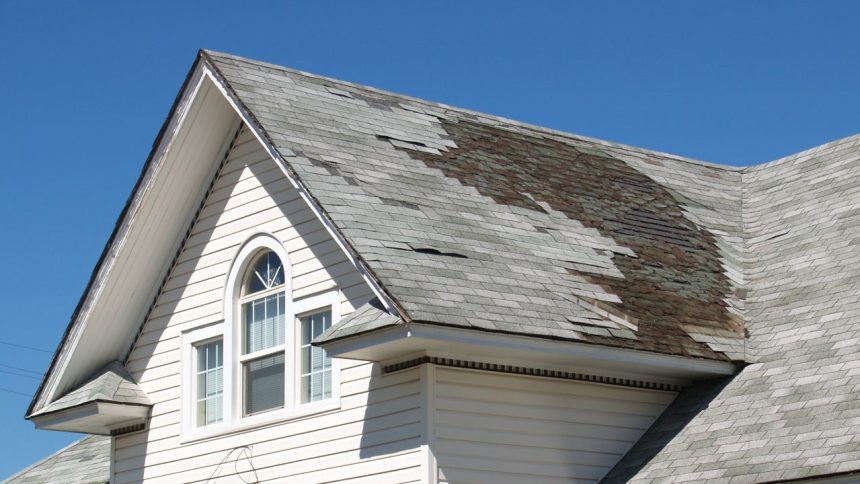MICHELANGELOBOY/Getty Images
Understanding home insurance replacement cost coverage is crucial for homeowners seeking to protect their financial investment in their homes. Replacement cost homeowners insurance provides the ability to rebuild or repair your home and replace personal belongings without deducting for depreciation. This type of coverage, which is included in standard policies for some coverage types, helps ensure that you can bring your property back to its original condition if you experience damage from covered events. However, replacement cost does cost more and might not be the best option for all homeowners in all circumstances.
What is replacement cost in homeowners insurance?
The value of most things depreciates over time, including your personal belongings and the materials used to build your home. A standard HO-3 home insurance policy typically includes replacement cost value (RCV) for your dwelling and other structures coverage. This means that the insurance company pays for the structures to be rebuilt with materials at current costs up to your coverage limits following a covered claim. The same policy may only cover your personal belongings at actual cash value (ACV), or their replacement cost minus depreciation, unless you opt to add home insurance replacement cost coverage for personal belongings.
Replacement cost homeowners insurance may be worth considering for the contents of your home if you want to replace older items with newer ones. Like dwelling replacement cost, contents replacement cost usually has a coverage limit maximum as defined in your home insurance policy. If you have specific high-value items, like jewelry and fine arts, you may want to consider scheduled personal property coverage, as these types of items typically need higher per-item limits.
Actual cash value vs. replacement cost value
The biggest difference between actual cash value and replacement cost value is how much you are paid for your damaged items after a covered claim.
Replacement cost coverage is designed to reimburse you for new versions of damaged items after a covered claim. Actual cash value coverage costs less than replacement cost value insurance, but it will only pay out the replacement cost of the item minus depreciation.
For example, say you purchased a couch a couple of years ago for $2,000, but it depreciated by $500 before it was destroyed in a covered claim. If the cost of a new couch is now $2,200, the actual cash value payout for the damaged couch would be $1,700 ($2,200 – $500).
Replacement cost value vs. market value
RCV and market value are not the same, especially when it comes to home insurance. Market value is the amount an appraiser deems a home or property is worth or the amount that someone is willing to pay for that home or property, including the land. It is based on what the current market is willing to pay.
Homeowners insurance companies do not use market value when calculating costs for dwelling or personal property coverage. With RCV coverage, the cost to rebuild the home’s structure or replace personal property at today’s prices is accounted for in the dwelling coverage and is paid for following a covered loss. This will likely be lower than the market value, as it does not take land value into consideration.
How replacement cost is determined by insurance companies
Insurance companies evaluate your home’s characteristics, such as building materials, age, square footage and labor costs in your area to calculate your home’s dwelling coverage amount. Your personal property coverage amount is determined based on a percentage of your dwelling amount, usually between 50 and 70 percent, but you can choose to raise those limits if you wish. Once those figures are determined, your policy would cover either RCV or ACV for damaged or destroyed items that fall within these coverage types.
Therefore, the replacement cost is not determined entirely by your insurance company, per se. The coverage amounts where replacement cost can apply, dwelling, other structures and personal property coverage, are determined by you and your insurance company. In many cases, replacement cost coverage will apply to your dwelling and other structures coverage. However, personal property coverage varies by insurer. It may be best to review how replacement cost coverage applies (or does not apply) to your coverage to avoid surprises should a claim occur.
Guaranteed vs. extended replacement cost coverage
When you first purchase your home policy, your agent calculates the current replacement value of your home. However, there are situations where the replacement cost of your home can change drastically throughout the year. Inflation impacts the cost of materials and labor throughout the year and as the economy fluctuates. In situations with widespread losses, the sudden high demand for materials and labor, along with transportation difficulties, can also drastically inflate the replacement cost of your home. To account for this, many companies offer replacement cost endorsements for your dwelling that may help you avoid expensive out-of-pocket costs.
- Guaranteed replacement: This coverage helps pay for rebuilding the structure of your home after a covered peril, even if the current cost is higher than the coverage limits listed on your declarations page. For instance, if your dwelling coverage only covers up to $250,000, but the cost to rebuild your destroyed home is $300,000, guaranteed replacement cost could cover the rebuild even though it exceeds the coverage limits.
- Extended replacement: This coverage considers a certain percentage, often 25 to 30 percent, over the dwelling coverage limits specified in the policy. For example, if your coverage limit was up to $200,000, but the cost of rebuilding your home is $250,000, an extended replacement cost endorsement that covers up to 25 percent more than the policy limits would cover the cost to rebuild.
These endorsements are typically more expensive than standard dwelling coverage. However, if you want more complete financial protection over the long term, they may be options worth considering. Speaking with your insurance agent may help you determine if these types of coverage are right for you.
Frequently asked questions
-
-
Deciding between actual cash value and replacement cost value is a trade off between the cost of coverage and potential out-of-pocket expenses. If you’re looking for the cheapest home insurance, then insuring your belongings at actual cash value will likely be a better fit. On the other hand, if you want to limit what you spend on new belongings if they are destroyed in a covered loss, and have more room in your budget for home insurance, then replacement cost value will probably be best.
-
Replacement cost coverage is typically included for the dwelling and other structures components of a standard home insurance policy. It does typically cost more to add a personal property replacement cost endorsement to a home policy, but the cost will vary and some carriers, such as USAA, may even include it as part of a standard home policy. When deciding if replacement cost personal property coverage is right for you, you may want to create a home inventory of your personal property. Understanding the current value of your contents may help decide if RCV is the right choice for you.
-
The best homeowners insurance companies depend on your needs and wants from a carrier. You may want a company that has longevity in the industry and a good track record of paying claims. Or, you may be more focused on mobile services and price. Determining what is most important to you from an insurance company may help you find the best home insurance carrier to meet your insurance needs.
-
Unlike actual cash value, replacement cost covers the cost of new items at current prices. By contrast, actual cash value only pays for the item’s replacement cost minus depreciation. Having replacement cost coverage can help minimize the out-of-pocket expenses you will face after a covered loss.
-
The cost of replacement cost coverage varies based on several factors, including the value of your home, the location, the coverage limits you choose and any additional endorsements you add to your policy. In standard HO-3 policies, your dwelling and other structures are already covered at replacement cost, but your personal property typically is not. Replacement cost coverage is generally more expensive than actual cash value coverage because it provides more comprehensive financial protection, covering the full cost of replacing damaged or lost items at current prices. To get an accurate estimate, it is best to ask for quotes from multiple insurance providers, considering the specific details of your home and coverage needs.
-
Read the full article here













